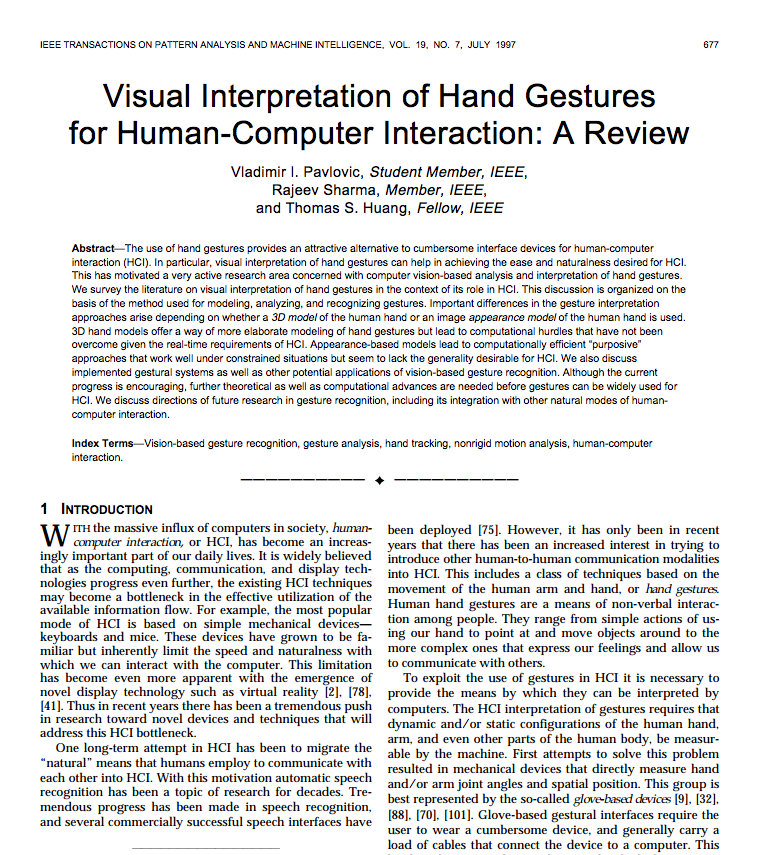
The use of hand gestures provides an attractive alternative to cumbersome interface devices for human-computer interaction (HCI). In particular, visual interpretation of hand gestures can help in achieving the ease and naturalness desired for HCI. This has motivated a very active research area concerned with computer vision-based analysis and interpretation of hand gestures. We survey the literature on visual interpretation of hand gestures in the context of its role in HCI. This discussion is organized on the basis of the method used for modeling, analyzing, and recognizing gestures. Important differences in the gesture interpretation approaches arise depending on whether a 3D model of the human hand or an image appearance model of the human hand is used. 3D hand models offer a way of more elaborate modeling of hand gestures but lead to computational hurdles that have not been overcome given the real-time requirements of HCI. Appearance-based models lead to computationally efficient “purposive” approaches that work well under constrained situations but seem to lack the generality desirable for HCI. We also discuss implemented gestural systems as well as other potential applications of vision-based gesture recognition. Although the current progress is encouraging, further theoretical as well as computational advances are needed before gestures can be widely used for HCI. We discuss directions of future research in gesture recognition, including its integration with other natural modes of human computer interaction.